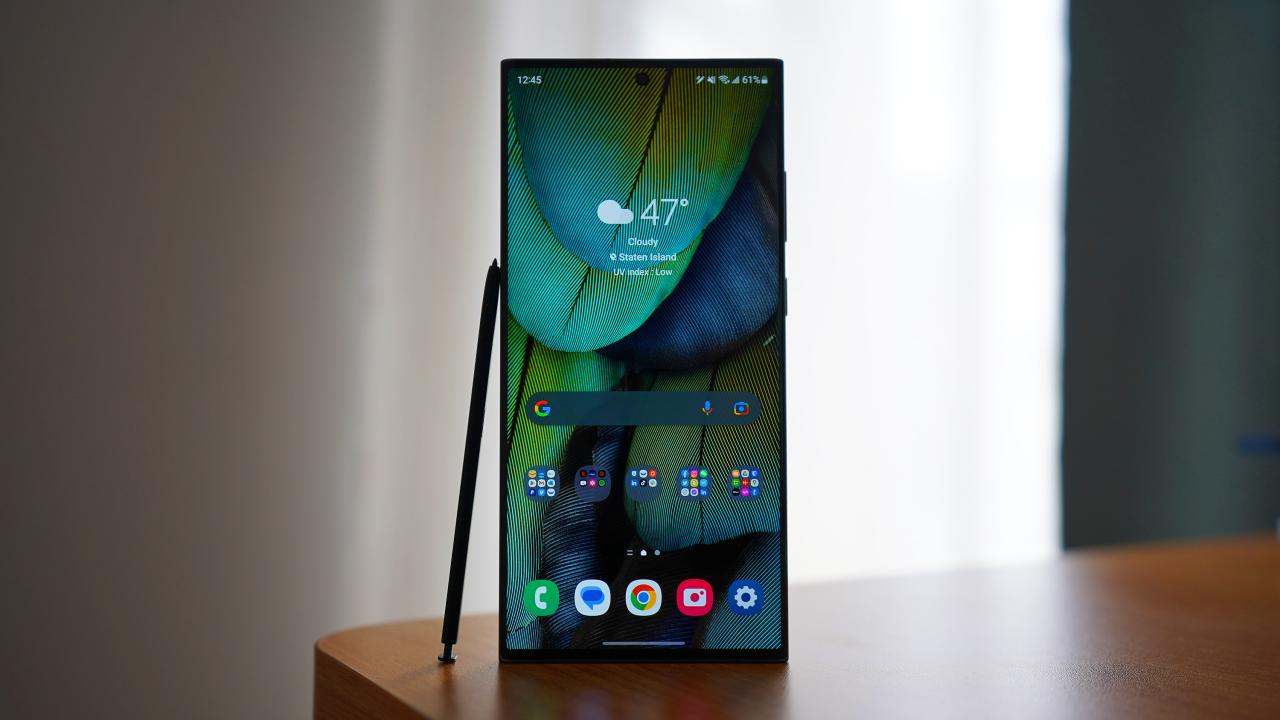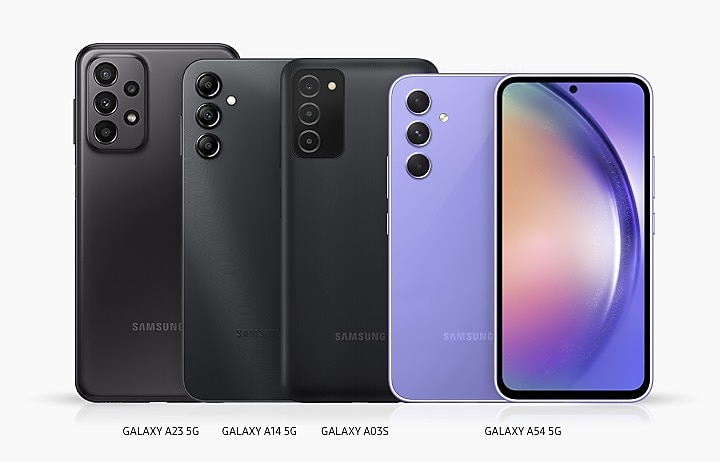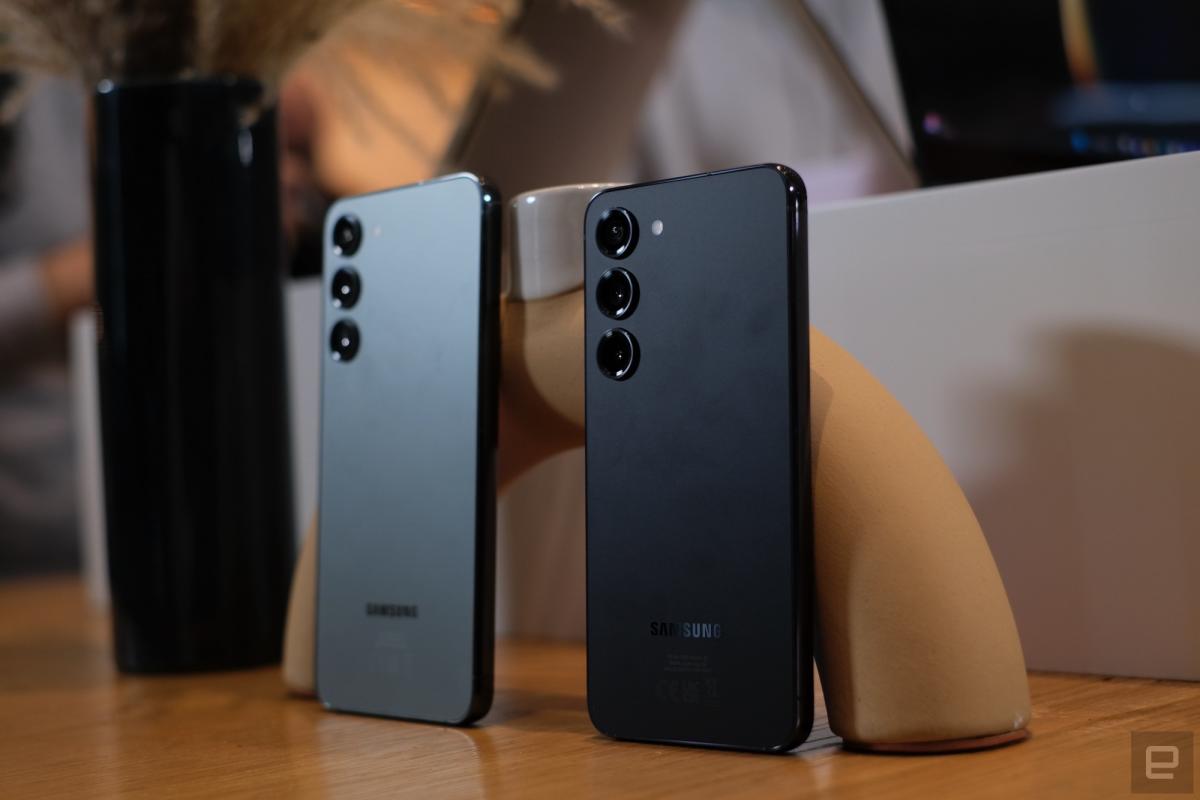samsung galaxy s 4 stands as a pivotal moment in the evolution of smartphones, blending cutting-edge technology with user-centric design. Released in 2013, it quickly revolutionized the market, showcasing advancements that redefined user expectations. From its vibrant display to its robust performance, the Galaxy S4 captures the essence of what a smartphone should represent—power, style, and functionality.
With its sleek design, available in a variety of color options, and premium materials, the Samsung Galaxy S4 was not only a powerful device but also a stylish companion. Its specifications boasted impressive processing power and a sophisticated camera, making it a formidable contender against its rivals. This combination of features helped cement its reputation and influence in the smartphone arena.
Overview of Samsung Galaxy S4

The Samsung Galaxy S4, unveiled in March 2013, marked a significant evolution in the smartphone landscape, showcasing a blend of advanced technology and user-friendly features. With a robust set of specifications, it quickly became a flagship device that set standards within the industry, influencing the design and functionality of future smartphones.
The Galaxy S4 comes equipped with a 5-inch Super AMOLED display boasting a resolution of 1920 x 1080 pixels, resulting in vibrant colors and sharp images. Powered by a quad-core Snapdragon 600 processor or an octa-core Exynos 5 Octa processor, depending on the region, it delivers exceptional performance for multitasking and demanding applications. The device houses 2GB of RAM and offers storage options of 16GB, 32GB, or 64GB, expandable via microSD up to 64GB. In terms of photography, the S4 features a 13-megapixel rear camera with advanced functions such as Dual Shot and Photo Sound, alongside a 2-megapixel front camera for high-quality selfies and video calls. The Galaxy S4 also supports LTE connectivity, NFC, and is powered by a removable 2600mAh battery, ensuring sufficient energy for daily use.
Historical Context of the Galaxy S4’s Release
Launched as a successor to the popular Galaxy S3, the Galaxy S4 debuted during a period of intense competition among smartphone manufacturers. At its release, Samsung aimed to solidify its dominance over the market amid growing pressure from Apple’s iPhone and emerging players like HTC and LG.
Significantly, the S4’s introduction came at a time when consumers were increasingly seeking devices with larger screens and superior cameras. Samsung responded to these demands by introducing features like Smart Scroll, Air Gesture, and new camera modes, which not only enhanced user experience but also set new benchmarks for smartphone capabilities. The Galaxy S4 quickly achieved impressive sales figures, selling over 10 million units within its first month, thereby reinforcing Samsung’s position as a leader in the smartphone space.
Design Elements of the Galaxy S4
The design of the Samsung Galaxy S4 reflects a careful balance between aesthetics and functionality. Featuring a lightweight plastic body, the S4 was designed to be both portable and durable. The rounded corners and slim profile contributed to a comfortable grip, making it user-friendly for prolonged use.
In terms of color options, the Galaxy S4 was available in several hues, including Black Mist, White Frost, Blue Arctic, and Red Aurora. Each color variant was tailored to appeal to different consumer preferences, allowing users to express their individuality through their device.
The front of the device is dominated by the 5-inch display, with minimal bezels enhancing the immersive experience. The physical home button beneath the display is flanked by capacitive touch buttons, ensuring ease of navigation. The back cover, which is removable, offers access to the battery, SIM card slot, and microSD card slot, adding to the device’s practicality.
Overall, the Galaxy S4’s design was a crucial element of its success, reflecting Samsung’s focus on user-centric features and contemporary aesthetics that resonated with a broad audience.
Performance Evaluation

The Samsung Galaxy S4 is a powerhouse of performance, boasting advanced technology that stands out in the competitive landscape of smartphones. With its robust processing capabilities, efficient battery management, and software performance, the Galaxy S4 makes a significant mark in its class. This section delves into the processing power, battery life, and overall software performance of the device, comparing it with its contemporaries and examining its strengths and weaknesses.
Processing Power Comparison
The Samsung Galaxy S4 is equipped with either the Exynos Octa 5410 or Qualcomm’s Snapdragon 600 processor, depending on the region. This dual-processor configuration allows for impressive multitasking and smooth operation under heavy loads. With a clock speed of up to 1.9 GHz, the Snapdragon variant performs exceptionally well in graphics-intensive applications, making it a strong competitor against devices like the HTC One and LG G2.
To illustrate the processing capabilities, benchmark tests reveal that the Galaxy S4 achieves scores significantly higher than earlier models and many of its competitors. For example, in the AnTuTu benchmark, the Galaxy S4 scored around 25,000 points, outperforming devices such as the iPhone 5 and Nokia Lumia 920.
Battery Life and Power Management Features, Samsung galaxy s 4
Battery life is a critical aspect of any smartphone experience, and the Galaxy S4 does not disappoint. It comes with a 2600 mAh removable battery that provides all-day usage under typical conditions. Users can expect approximately 10 hours of web browsing and up to 12 hours of video playback, which is competitive within its category.
The Galaxy S4 also features advanced power management options that enhance battery longevity. The “Power Saving Mode” reduces CPU performance and limits background data usage, while “Ultra Power Saving Mode” transforms the phone into a simplified interface, allowing for extended usage even with minimal battery. This ability makes the Galaxy S4 a reliable choice for users who prioritize battery life.
Software Performance Strengths and Weaknesses
The software experience on the Galaxy S4 is powered by Android 4.2.2 Jelly Bean, layered with Samsung’s TouchWiz interface. While this provides a plethora of features, the interface has been critiqued for being resource-heavy, which can lead to occasional lag during heavy multitasking scenarios. However, features like Smart Scroll, Air Gesture, and a customizable home screen enhance usability, showcasing the strengths of Samsung’s software design.
Key strengths include:
-
Multi-window functionality allows for running two apps simultaneously, boosting productivity.
- Rich customization options let users tailor their experience to personal preferences, from themes to widgets.
- Regular software updates ensure access to the latest Android features and security patches.
Conversely, some weaknesses can be identified:
- TouchWiz can become sluggish under heavy use, particularly with numerous applications open simultaneously.
- Stock Android enthusiasts may find Samsung’s modifications overwhelming and unnecessary.
- Occasional bloatware can consume storage and resources, detracting from overall performance.
Camera Capabilities: Samsung Galaxy S 4
The Samsung Galaxy S4, released in 2013, brought significant advancements in smartphone photography, positioning itself as one of the leading devices of its time. With an impressive 13-megapixel rear camera and a 2-megapixel front-facing camera, it offered features that appealed to both casual users and photography enthusiasts alike. The Galaxy S4’s camera specifications and features played a crucial role in its popularity, enabling users to capture stunning images and videos with ease.
Camera Specifications and Features
The Samsung Galaxy S4’s camera is equipped with several specifications and features that enhance its photographic capabilities. Notably, the 13-megapixel rear camera includes autofocus, LED flash, and the ability to record Full HD 1080p video at 30 frames per second. Additionally, it features a range of shooting modes that allow users to experiment with their photography. Some of the key features include:
- Dual Shot: This mode enables simultaneous capturing of photos from both the front and rear cameras, allowing for creative compositions.
- Sound & Shot: Captures a photo along with a short audio clip, adding a unique storytelling element to images.
- Drama Shot: This feature allows users to capture multiple images and combine them into one dynamic photo, perfect for capturing movement.
- Rich Tone (HDR): High Dynamic Range mode enhances the contrast and color balance in photographs, making them more vibrant.
- Best Face: This feature lets users select the best face from multiple shots, ensuring that everyone looks their best in group photos.
Maximizing Camera Performance in Various Lighting Conditions
To fully leverage the camera capabilities of the Samsung Galaxy S4, understanding how to optimize performance in different lighting conditions is essential. Here are techniques to enhance photo quality across various environments:
- Low Light: Activate the Night mode to assist the camera in adjusting exposure settings, allowing for brighter images without excessive noise.
- Bright Light: Use the HDR mode to balance high contrast scenes, ensuring both the bright and dark areas of an image are well-exposed.
- Backlit Subjects: Utilize the exposure compensation feature to brighten the subject in front of a strong light source, preventing silhouettes.
- Indoor Shots: Increase ISO settings to capture more light while being mindful of the potential graininess in the images.
Comparison with Other Smartphones of the Era
When compared to other flagship smartphones released around the same period, the Samsung Galaxy S4’s camera capabilities were noteworthy. In direct comparison with devices such as the HTC One and the iPhone 5, the Galaxy S4 often outperformed in specific areas like low-light performance and versatility in shooting modes.
| Smartphone | Camera Resolution | Key Features | Notable Performance |
|---|---|---|---|
| Samsung Galaxy S4 | 13 MP | Dual Shot, HDR, Best Face | Excellent low-light performance |
| HTC One | 4 MP (UltraPixel) | Optical Image Stabilization, HDR | Strong low-light performance, but lower resolution |
| iPhone 5 | 8 MP | Panorama, HDR | Consistent performance, but less versatility in modes |
The Galaxy S4’s camera offered a blend of high resolution and innovative features, making it a compelling choice against its contemporaries. Its ability to adapt to various lighting conditions and provide unique photographic options solidified its reputation in the smartphone market.
User Experience and Interface

The Samsung Galaxy S4 is renowned not only for its powerful hardware but also for its user-friendly interface that enhances the overall user experience. This smartphone has been meticulously designed to provide a seamless interaction between the user and the device. With a variety of features and customization options, the Galaxy S4 ensures that users can tailor their experience to fit their personal preferences.
The user interface of the Samsung Galaxy S4 is built on Android with Samsung’s TouchWiz overlay, creating a vibrant and intuitive experience. One of the standout features is the Smart Stay function, which uses the front-facing camera to detect whether the user is looking at the screen, preventing it from timing out. Additionally, the device supports multi-window functionality, allowing users to run two apps side by side for increased productivity. Other unique features include Air Gesture, which allows users to navigate the phone without touching the screen, and S Voice, a voice-activated assistant that can perform tasks such as setting reminders and sending messages.
User Feedback and Reviews
User feedback on the Samsung Galaxy S4 has generally been positive, with many praising its usability and functionality. Users have highlighted the responsiveness of the interface and the smooth navigation experience. The display quality, with its Full HD Super AMOLED screen, has received acclaim for its vibrant colors and sharpness, enhancing the overall viewing experience. However, some users have voiced concerns regarding bloatware, as the device comes preloaded with several Samsung apps that may not be utilized, potentially consuming storage space.
One noteworthy aspect of user feedback revolves around the battery performance. While many users find the battery life satisfactory, heavy users often report the need for frequent charging, especially with high-intensity tasks like gaming or video streaming. Overall, the balance between features and performance has resonated well with most users, making the Galaxy S4 a favored choice among smartphones.
Tips and Tricks for Optimizing User Experience
To maximize the functionality and usability of the Samsung Galaxy S4, users can implement several tips and tricks. Below is a collection of strategies that enhance the overall experience, allowing users to navigate their devices more efficiently:
- Customize Home Screen: Arrange apps and widgets to create a personalized home screen layout that suits individual needs.
- Utilize Smart Features: Make use of Smart Stay and Smart Scroll to enhance interaction without unnecessary screen touches.
- Enable Multi-Window Mode: Take advantage of the multi-window feature to multitask effectively by running two apps simultaneously.
- Optimize Battery Settings: Use the built-in battery saver mode to extend battery life during critical moments.
- Adjust Display Settings: Fine-tune brightness and screen timeout settings to improve visibility and save battery life.
- Use Air View: Hovering over items with the S Pen or finger can provide previews without opening apps, enhancing efficiency.
- Manage Notifications: Customize notification settings to prioritize alerts that matter most, minimizing distractions.
Clarifying Questions
What are the key specifications of the samsung galaxy s 4?
The Samsung Galaxy S4 features a 5-inch Super AMOLED display, Snapdragon 600 processor, 2GB RAM, and options for 16GB, 32GB, or 64GB of internal storage, expandable via microSD.
How does the camera of the samsung galaxy s 4 compare to its contemporaries?
The S4’s 13MP rear camera featured advanced functions like Dual Shot and Drama Shot, outperforming many competitors in low-light conditions and offering enhanced photo capabilities.
Is the battery life of the samsung galaxy s 4 adequate for daily use?
Yes, equipped with a 2600mAh battery, the S4 provides decent battery life that typically lasts a full day under moderate use, thanks to its efficient power management.
What makes the user interface of the samsung galaxy s 4 unique?
The Galaxy S4 introduced features like Smart Scroll and Air Gesture, enhancing user interaction by enabling touchless control and intelligent screen adjustments based on user behavior.
Can I still receive software updates for the samsung galaxy s 4?
As of now, the Samsung Galaxy S4 is no longer receiving official software updates, but it may still work with community-supported custom ROMs for those looking for continued updates.
The Samsung Galaxy F has made waves in the smartphone market with its impressive features tailored for budget-conscious consumers. This device stands out not just for its affordability but also for its robust performance, captivating camera capabilities, and sleek design. It’s a compelling choice for those seeking quality without breaking the bank.
When discussing the latest innovations in mobile technology, the chip iPhone is often a focal point. Apple’s continuous improvements in chip design, particularly with the A-series, have significantly enhanced device performance, battery efficiency, and overall user experience. This evolution illustrates Apple’s commitment to maintaining its competitive edge in the smartphone industry.